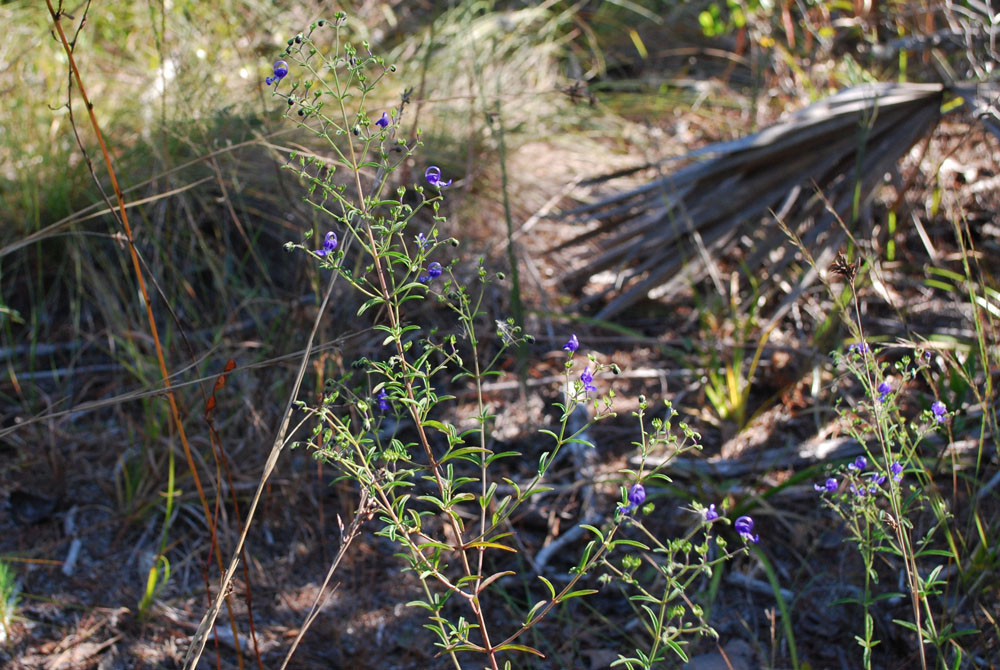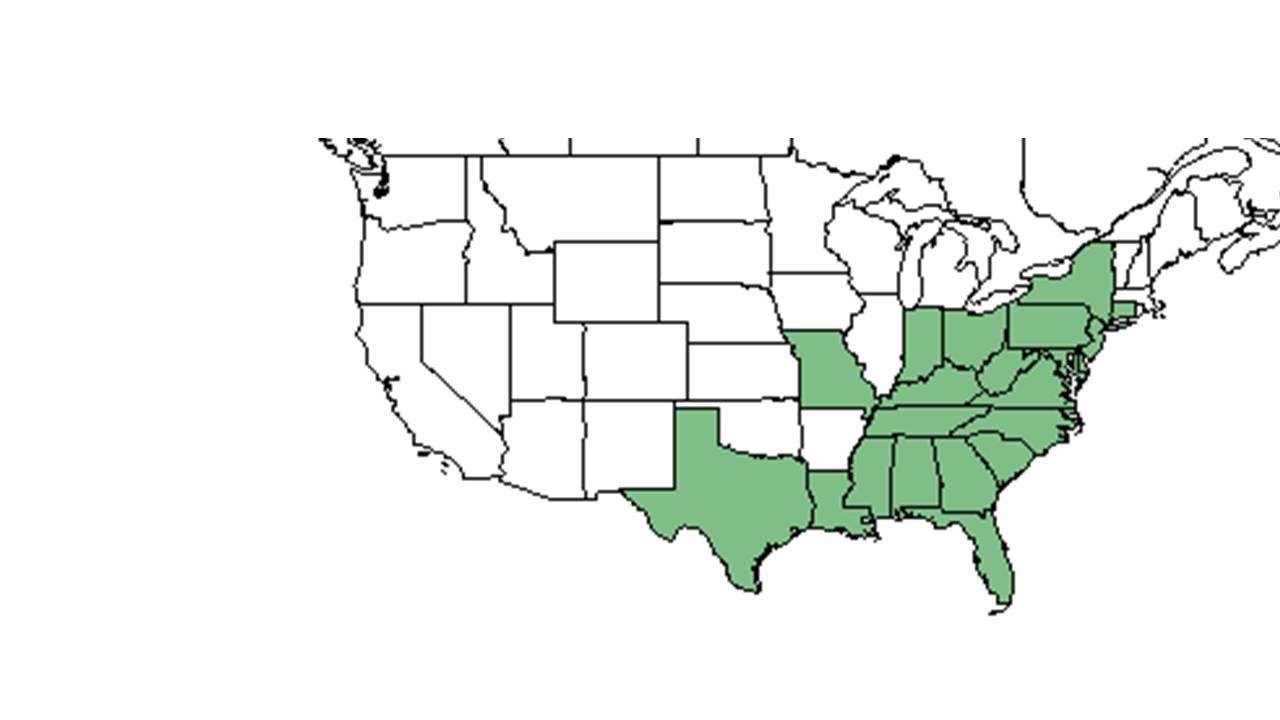Trichostema setaceum
| Trichostema setaceum | |
|---|---|

| |
| Photo by Wayne Matchett, SpaceCoastWildflowers.com | |
| Scientific classification | |
| Kingdom: | Plantae |
| Division: | Magnoliophyta – Flowering plants |
| Class: | Magnoliopsida – Dicotyledons |
| Order: | Lamiales |
| Family: | Lamiaceae ⁄ Labiatae |
| Genus: | Trichostema |
| Species: | T. setaceum |
| Binomial name | |
| Trichostema setaceum Houtt. | |

| |
| Natural range of Trichostema setaceum from USDA NRCS Plants Database. | |
Common name: Narrowleaf bluecurls
Contents
Taxonomic notes
Synonyms: Trichostema dichotomum var. lineare (Walter) Pursh; Trichostema lineare Walter.[1]
Description
"Pubescent annual or weak perennial herbs from tap roots, freely branched with opposite branches. Stems obscurely angled, usually stipitate-glandular, leafy. Leaves entire or toothed, rarely lobed, petiolate to essentially sessile. Inflorescence a panicle of paired, bracteate, helicoid cymes with a flower at the axis of each pair; bracts similar to the leaves, smaller. Calyx bilabiate, lower lip longer than the upper with 3 essentially equal teeth, upper with 2 similar teeth; corolla blue to violet, zygomorphic, 5-lobed, lowest lobe lip-like, 5-10 mm long, lateral triangular-ovate, 2-4 mm long, tube short. Stamens 4, ca. 2X as long as the corolla, curved between the lateral lobes and curled downward almost meeting the lip; stigma bilobed, style curled in same fashion as stamens. Mericarps brownish to olive or blackish, dull, obovoid."[2]
"Stems, at least the principle ones, uniformly retrorsely short-pubescent, with trichomes 0.1-0.2 mm long. Leaves elliptic-linear, 1.5-4 cm long, 1-5 mm wide, entire, tapered to short petioles or sessile. Mericarps obscurely reticulate, 1.6-1.8 mm long."[2]
Distribution
Ecology
Habitat
In the Coastal Plain in Florida and Alabama, T. setaceum can be found in upland pine-hardwood forests, pinewoods, turkey oak-longleaf pine barrens, sand ridges, longleaf pine/scrub oak/wiregrass ridges, sandhill oak scrubs, and wiregrass-longleaf pine communities.[3] It is a ruderal species and can be found in cleared pine forests, turkey oak sand ridge clearings, and roadsides. Soil types include loamy sand and loamy soil.[3] Associated species include Vaccinium stamineum, Warea, Agalinis, Liatris, and Dicerandra.[3]
Phenology
This species has been observed to flower and fruit in September through November.[3][4]
Seed dispersal
This species is thought to be dispersed by gravity.[5]
Use by animals
It seems to be a major plant food for bobwhites during the month of October.[6]
Conservation, cultivation, and restoration
Cultural use
Photo Gallery
References and notes
- ↑ Weakley, A.S. 2015. Flora of the southern and mid-atlantic states. Working Draf of 21 May 2015. University of North Carolina at Chapel Hill, Chapel Hill, North Carolina.
- ↑ 2.0 2.1 Radford, Albert E., Harry E. Ahles, and C. Ritchie Bell. Manual of the Vascular Flora of the Carolinas. 1964, 1968. The University of North Carolina Press. 897. Print.
- ↑ 3.0 3.1 3.2 3.3 Florida State University Robert K. Godfrey Herbarium database. URL: http://herbarium.bio.fsu.edu. Last accessed: July 2015. Collectors: Lisa Keppner, Ed Keppner, Loran C. Anderson, Robert K. Godfrey, L. H. Shinners, Cindi Stewart, - MacClendons, Robert L. Lazor, R. Kral, A. F. Clewell, Roy Jervis, C. Jackson, Gary R. Knight, Sidney McDaniel, Wilson Baker. States and Counties: Alabama: Baldwin. Florida: Bay, Escambia, Franklin, Gadsden, Jackson, Leon, Liberty, Santa Rosa, Wakulla and Washington. Compiled by Tall Timbers Research Station and Land Conservancy.
- ↑ Nelson, G. PanFlora: Plant data for the eastern United States with emphasis on the Southeastern Coastal Plains, Florida, and the Florida Panhandle. www.gilnelson.com/PanFlora/ Accessed: 19 MAY 2021
- ↑ Kirkman, L. Katherine. Unpublished database of seed dispersal mode of plants found in Coastal Plain longleaf pine-grasslands of the Jones Ecological Research Center, Georgia.
- ↑ McRae, W. A., J. L. Landers, et al. (1980). "Importance of habitat diversity in bobwhite management." Proceedings of the Annual Conference of the Southeastern Association of Fish and Wildlife Agencies 33: 127-135.